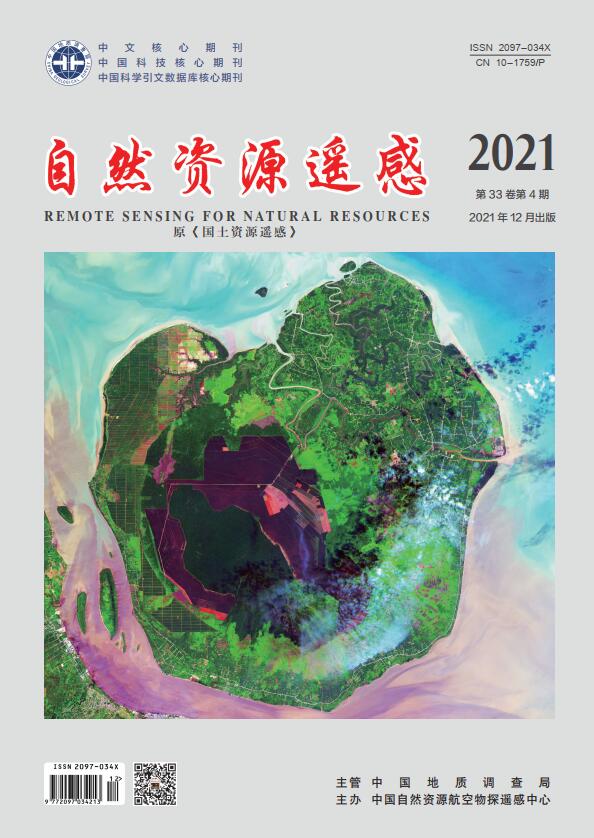| [1] |
Reaka-Kudla M L. The global biodiversity of coral reefs:A comparison with rain forests[M]//Reaka-Kudla M L,Wilson E O.Biodiversity Understanding and Protecting Our Biological Resources, Washington D C: National Academy Press, 1997:83-108.
Google Scholar
|
| [2] |
李淑, 余克服. 珊瑚礁白化研究进展[J]. 生态学报, 2007,27(5):2059-2069.
Google Scholar
|
| [3] |
Li S, Yu K F. Recent development in coral reef bleaching research[J]. Acta Ecologica Sinica, 2007,27(5):2059-2069.
Google Scholar
|
| [4] |
Wells J W. Scleractinia[M]//Moore R C.Treatise on invertebrate paleontology,Part F,Coelenterata,Geological Society of America and University of Kansas Press,Lawrence, 1956:F328-F444.
Google Scholar
|
| [5] |
Burke L, Reytar K, Spalding M, et al. Reefs at risk revisited[M]. Washington D C:World Resources Institute, 2011:1-144.
Google Scholar
|
| [6] |
Blunden J, Arndt D. State of the climate in 2017[J]. Bulletin of the American Meteorological Society, 2018,99:Si-S332.
Google Scholar
|
| [7] |
Eakin C M, Sweatman H P A, Brainard R E. The 2014—2017 global-scale coral bleaching event:Insights and impacts[J]. Coral Reefs, 2019,38:539-545.
Google Scholar
|
| [8] |
张乔民, 余克服, 施祺, 等. 中国珊瑚礁分布和资源特点[C]//全国海洋高新技术产业化论坛, 2005.
Google Scholar
|
| [9] |
Zhang Q, Yu K, Shi Q, et al. Distribution and resource characteristics of coral reefs in China[C]//National marine high tech industrialization forum, 2005.
Google Scholar
|
| [10] |
余克服. 南海珊瑚礁及其对全新世环境变化的记录与响应[J]. 中国科学:地球科学, 2012,42(8):1160-1172.
Google Scholar
|
| [11] |
Yu K F. Coral reefs in the South China Sea:Their response to and records on past environmental changes[J]. Science China Earth Sciences, 2012,42(8):1160-1172.
Google Scholar
|
| [12] |
Glynn P W, D’Croz L. Experimental evidence for high temperature stress as the cause of El Niño-coincident coral mortality[J]. Coral Reefs, 1990,8:181-191.
Google Scholar
|
| [13] |
Berkelmans R, Willis B L. Seasonal and local spatial patterns in the upper thermal limits of corals on the inshore Central Great Barrier Reef[J]. Coral Reefs, 1999,18(3):219-228.
Google Scholar
|
| [14] |
Strong A E, Liu G, Kimura T, et al. Detecting and monitoring 2001 coral reef bleaching events in Ryukyu Islands,Japan using satellite bleaching HotSpot remote sensing technique[C]//Proceedings of 2002 IEEE International Geoscience and Remote Sensing Symposium.Toronto:IEEE, 2002:237-239.
Google Scholar
|
| [15] |
Manzello D P, Berkelmans R, Hendee J C. Coral bleaching indices and thresholds for the Florida Reef Tract,Bahamas,and St.Croix,US Virgin Islands[J]. Marine Pollution Bulletin, 2007,54(12):1923-1931.
Google Scholar
|
| [16] |
Donner S D. An evaluation of the effect of recent temperature variability on the prediction of coral bleaching events[J]. Ecological Applications, 2011,21:1718-1730.
Google Scholar
|
| [17] |
Kleypas J A, Danabasoglu G, Lough J M. Potential role of the ocean thermostat in determining regional differences in coral reef bleaching events[J]. Geophysical Research Letters, 2008,35(3):L03613
Google Scholar
|
| [18] |
Kumagai N H, Yamano H, Sango-Map-Project C. High-resolution modeling of thermal thresholds and environmental influences on coral bleaching for local and regional reef management[J]. Peerj, 2018,6:e4382.
Google Scholar
|
| [19] |
李淑, 余克服, 陈天然, 等. 珊瑚共生虫黄藻密度结合卫星遥感分析2007年南沙群岛珊瑚热白化[J]. 科学通报, 2011,56(10):747-755.
Google Scholar
|
| [20] |
Li S, Yu K F, Chen T R, et al. Assessment of coral bleaching using symbiotic zooxanthellae density and satellite remote sensing data in the Nansha Islands,South China Sea[J]. Chinese Science Bulletin, 2011,56(10):747-755.
Google Scholar
|
| [21] |
Maturi E, Harris A, Mittaz J, et al. A new high-resolution sea surface temperature blended analysis[J]. Bulletin of the American Meteorological Society, 2017,98(5):1015-1026.
Google Scholar
|
| [22] |
Reefbase[DB/OL].[2020-08-10]. http://reefbase.org/main.aspx.
Google Scholar
|
| [23] |
Donner S D, Rickbeil G J M, Heron S F. A new,high-resolution global mass coral bleaching database[J]. Plos One, 2017,12(4):e0175490.
Google Scholar
|
| [24] |
Wilkinson C. Status of coral reefs of the world:1998[M]. Cape Ferguson,Queensland,and Dampier,Western Australia:Australian Institute of Marine Science, 1998.
Google Scholar
|
| [25] |
Wilkinson C. Status of coral reefs of the world:2002[M]. Perth,Western Australia:Australian Institute of Marine Science, 2002.
Google Scholar
|
| [26] |
Wilkinson C. Status of coral reefs of the world:2008[M]. Global Coral Reef Monitoring Network and Reef and Rainforest Research Centre,Townsville,Australia, 2008: 296.
Google Scholar
|
| [27] |
Zuo X, Su F, Shi W, et al. The 2014 thermal stress event on offshore archipelagoes in the South China Sea[C]//IEEE International Geoscience & Remote Sensing Symposium.IEEE, 2015.
Google Scholar
|
| [28] |
汤超莲, 李鸣, 郑兆勇, 等. 近45年涠洲岛5次珊瑚热白化的海洋站SST指标变化趋势分析[J]. 热带地理, 2010,30(06):577-581,586.
Google Scholar
|
| [29] |
Tang C L, Li M, Zheng Z Y, et al. An analysis on the trend of sea surface temperature indices for coral hot bleaching in Weizhou Island ocean observation station during 1966—2009[J]. Tropical Geography, 2010,30(06):577-581,586.
Google Scholar
|
| [30] |
Li X, Liu S, Huang H, et al. Coral bleaching caused by an abnormal water temperature rise at Luhuitou fringing reef,Sanya Bay,China[J]. Aquatic Ecosystem Health and Management, 2012,15(2):227-233.
Google Scholar
|
| [31] |
陈标. 西沙群岛2010年珊瑚热白化卫星遥感监测[C]//Proceedings of 2012 International Conference on Earth Science and Remote Sensing(ESRS 2012), 2012.
Google Scholar
|
| [32] |
Chen B. Satellite remote sensing monitoring coral bleaching during the 2010 bleaching event at Parcel Islands,South China Sea[C]//Proceedings of 2012 International Conference on Earth Science and Remote Sensing (ESRS 2012), 2012.
Google Scholar
|
| [33] |
Liu G, Heron S F, Eakin C M, et al. Reef-scale thermal stress monitoring of coral ecosystems:New 5-km global products from NOAA Coral Reef Watch[J]. Remote Sensing, 2014,6(12):1579-1160.
Google Scholar
|
| [34] |
Heron S F, Liu G, Eakin C M, et al. Climatology development for NOAA Coral Reef Watch’s 5-km product suite[R]//NOAA Technical Report NESDIS 145.NOAA/NESDIS.College Park, MD. 2015,21.
Google Scholar
|
| [35] |
Liu G, Rauenzahn J L, Heron S F, et al. NOAA Coral Reef Watch 50 km satellite sea surface temperature-based decision support system for coral bleaching management[R]//NOAA Technical Report NESDIS 143;NOAA/NESDIS:College Park,MD,USA, 2013,33. |






 DownLoad:
DownLoad: